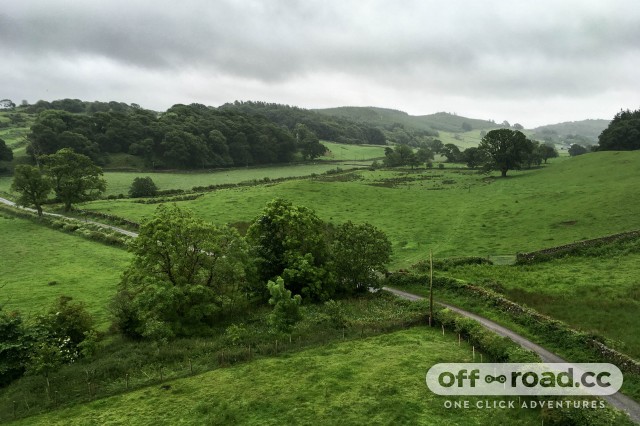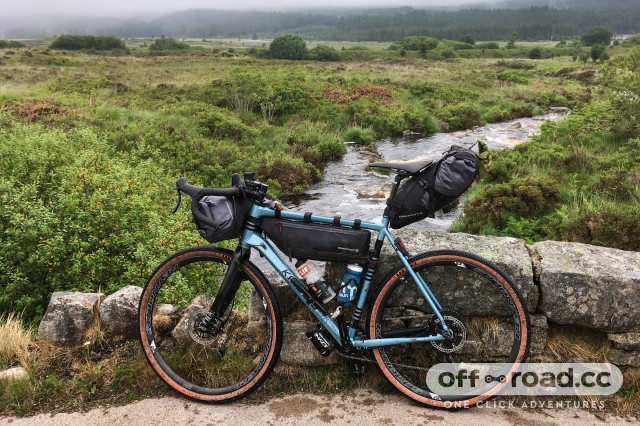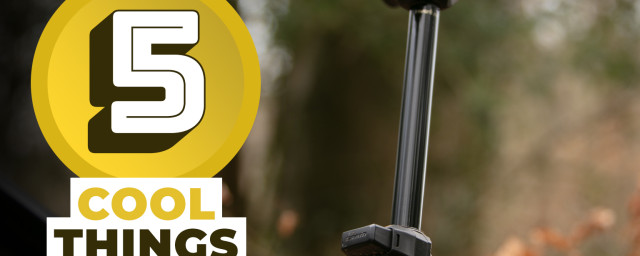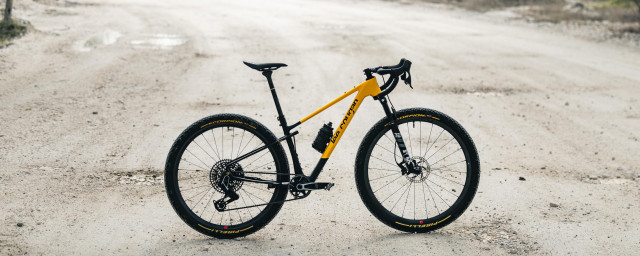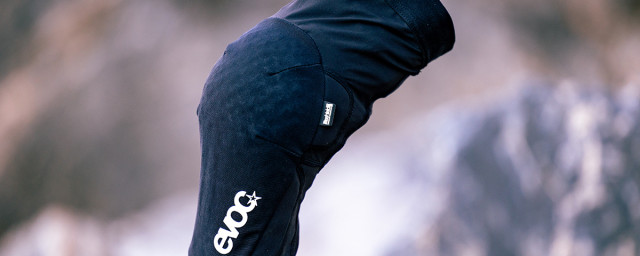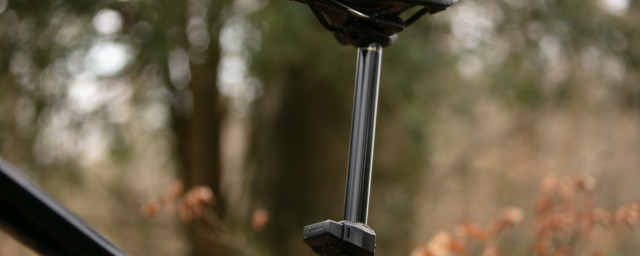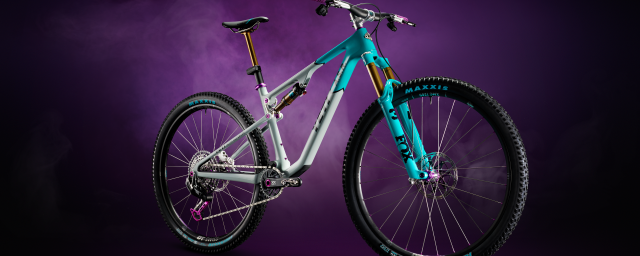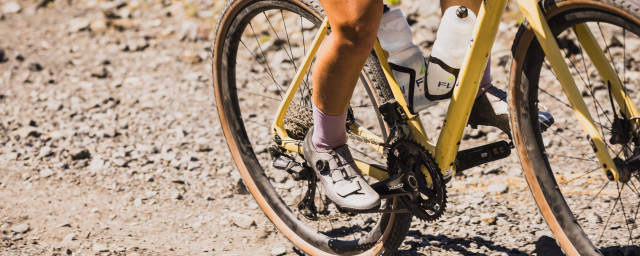Ride Report: Going The Distance

I recently rode the inaugural edition of The Distance (link is external), an overnight bikepacking event organised by Focal Events and Kinesis UK. This two-day event took a predominantly gravel route through the beautiful landscape of Dumfries, Galloway.
The first day of the event involved a variable distance based on your progress, ranging from 100 to 165km, with different routes provided at checkpoints throughout the day. It is not a race and participants are expected to go at their own pace y the journey.
The sections are arranged so that everyone arrives at the camping destination at roughly the same time, where food, lots of gin and campfires were provided. The next day a relaxed ride of around 85km brings you back to the start.
A soggy start
Saturday morning was not the most auspicious start with rain and wind greeting us. Nonetheless, a diverse group of riders converged at Colvend Village Hall, the starting point for the day.
The unique format of The Distance was particularly nice as it attracted a wide range of riders. Everyone is welcome and will end up riding a route based on their own abilities. It is not a race, and as such riders can settle into their own pace and simply enjoy the journey.
The route started out directly onto some flowing forest tracks. After some steady cycling we descended to the first checkpoint of the day in Kirkcudbright where, 44km in we decided we deserved a break because we were all thoroughly soaked.
I can wholeheartedly recommend the steak pies and caramel slices at the Paul Jones Bakery if you are ever passing through!
Fuelled by coffee and food we took the long route option to the next checkpoint. This was the largest climbing section of the day but the wind was blowing in our favour meaning we made very good time, climbing up into the clouds and hills.
off.road.cc on WhatsApp
All the latest offroad cycling news, tech and buying advice straight to your phone.Follow our WhatsApp channel here
Little did we know that, despite the rain fizzling out at this point, the wettest part of the day was yet to come.
Going off-road back onto forestry tracks we soon ended up riding through what felt more like streams than paths, and with some navigational errors (i.e. blindly trusting the gpx file) did some bushwhacking through trees, were stopped by a torrent that was not on the map and squelched our way through a bog to get back onto the right road.
The final major section of the day was arguably the most spectacular, heading into the hills proper. Wide open gravel roads allowed some speedy (and spicy) descending. The sun even came out at a few points!
I will admit that I had my low-ebb of the day and to my shame pushed a short, twisting, steep section when my legs just didn’t want to pedal anymore.
Despite several punctures in our group – nowadays I will always advocate using the largest tyres you can fit – and our extended break in Kirkcudbright having put us at the back of the long route-option pack, we did start to catch up with some groups at this point.
I know it’s not a race, but it is always gratifying to feel at least moderately speedy. We came to the last checkpoint, and the optional final deviation took us back up the hill to descend down a 7stanes blue run down to our camp.
All in all, it was a great route with a very engaging day’s riding. Everything was easily rideable, with your own abilities dictating the speed you take things at. There was a fantastic mix of gravel, forest tracks, roads, mud, views and adventure.
Apart from the occasional hiccup when not paying attention, navigation was easy and only one encounter with midges necessitated riding speedily onwards.
The route was well paced, with most of the climbing done early in the day and the different options ensuring everyone got to the campsite at roughly the same time. Whilst the weather wasn’t ideal, it didn’t detract from the experience and just made it all feel a bit more adventurous.
The Camp
Arriving at the campsite I was feeling more than a little grimed up. Thankfully a warm meal and hot shower returned me to feeling more human. Normally I am more than happy going without such comforts on adventures like these – however where showers are available it’s admittedly nice to feel clean.
People soon converged on the gin tent, set up by Crafty Distillery. Gin and tonic may not be the best recovery drink but it felt like it did me good and led to a relaxed evening in good company.
The guys from pannier.cc (link is external) had set up their tent along with campfires which were the focal point for the evening. I had heard that these guys always provide good food and they did not disappoint. Hunks of cheese and crackers, fire roasted bananas with chocolate and popcorn provided additional fuel for the rest of the evening.
As the embers died down, people began to drift off to their tents. I set up my own camp. Sleeping mat and bag inside the bivvy, clean clothes on and wet gear hung up to try and dry out for the next day.
Not surprisingly my things were decidedly damp in the morning. When this happens I find it’s best to grin and bear it and rely on your body heat to dry you and your clothes out. It helps to put layers on top (such as a puffa jacket) to keep you warm whilst you do this.
The Way Back Home
The ride back to Colvend was a relaxed affair, with a hearty breakfast to start off the day. As is the way, our departure was later than expected. However, the weather was significantly improved with only light showers in the morning.
The way back was a nice, shorter 85km day of riding taking in parts of the coastline, a quick jaunt on the beach and a speedy, haddock powered climb out of Kirkcudbright following another extended break for lunch at a chippy - or perhaps it was just the tailwind pushing us along.
Where necessary, lifts were offered to riders to get them over the larger climbs of the day. Some more gravelling and final climbs surmounted, the route ended with a descent down to the beach straight to the ice-cream van.
What to Expect
I think a great weekend was had by all and I can only see The Distance becoming more popular and I fully intend to ride again next year.
As long as you are up for the minimum distance it doesn’t matter what you’re riding, with everything from old-school Specialized Rockhoppers to custom built gravel bikes taking part.
For those who want an introduction to bikepacking, this provides a prime opportunity to try it out in a relatively supported environment. Whilst the camping is not properly “wild” it is a good way to practice this way of travelling and provides a great opportunity to socialise with like-minded people and spend an evening in good company.
For myself I look forward to getting the opportunity to ride other engaging routes in different parts of the UK, discovering landscapes that I would not otherwise know how best to explore. The riding is what you make of it – it was a challenge but well worth the effort over the weekend.
This event bills itself as The Distance, but it’s really all about the journey that you take along the way.
The right tool for the job
The Kinesis Tripster ATR V2 (link is external) was the perfect machine to take on the route, dealing well with the luggage it had to carry, variable surfaces and dreich conditions.
The frame rode like a charm. It’s difficult to say exactly how much of the comfort came from the high volume tyres and how much from the frame but I felt pampered throughout the day.
The bike seemed to soak up buzz with ease and held its line well through broken ground. It felt planted, possibly also as a result of the two thru-axles stiffening up both ends and giving precise steering.
The bike rode very well whilst loaded, with handling characteristics not suffering noticeably. I imagine the relatively slack angles help keep things stable. I will be interested to see how it feels without luggage over the next week of testing.
I was pleasantly surprised by the TRP Spyre brakes which are a step up from other mechanical disc brakes I have tried. That said, hydraulics would have been nice – automatic pad adjustment would have saved some fiddling throughout the day as I wore through most of the pads given the gritty conditions.
The SRAM Rival 1 groupset provided accurate shifting, though I did find the double-tap shifter a little temperamental when not pushing quite through the full stroke of the lever. However, the drivetrain shifted reliably and cleared grime effectively, only needing a slight top-up of lube at the end of the day.
The Crosslight wheels gave me no issues, but the real highlight was the 45c WTB Riddler rubber. Surprisingly fast rolling on the roads, they were also confidence inspiring off-road despite running them at a higher pressure than I would have had they been set up tubeless. For this kind of gravel/off-road biased riding, I think they are brilliant.
Essential Equipment
My kit can be divided into three categories: riding kit, camping kit and tools/accessories.
My ride clothes depend on the conditions. The forecast was warm enough for bib-shorts. I swear by my Brynje mesh base-layer which though it looks ridiculous works incredibly well for me. I added a jersey and arm-warmers on top of that. I took a minimal waterproof shell (as well as shoe covers) and a cap to keep the sweat and rain out of my eyes.
I would usually use a windproof (I did have a wind-gilet for when the rain stopped) and rely on my body heat to dry me out in light rain. I have never found a waterproof that can cope with my copious “sweat-output” and prefer the breathability of a non-membrane layer. However as it was chucking it down for most of the weekend, a waterproof was a good idea.
I opted for a lightweight camping approach and took a bivy-bag rather than a tent. At only 500g, the Outdoor Research Helium Bivy is still adequately spacious and comfortable. A sleeping bag and mat come along as well and a sleeping bag liner will protect your bag from dirt and sweat.
I take clean clothes to be worn at camp and always add an insulation layer. This also adds an extra layer for emergencies. A spare pair of socks is a comfortable camping essential.
A Garmin with gpx files loaded was used for navigation with a compass and map (provided at each checkpoint) as backup. I pack a tool kit and small first aid kit. A headtorch is useful for camp. Finally, a camera for documenting your adventures is a worthwhile addition.
Whilst a more luxurious approach is possible, my preference is to ride lighter. This is especially the case for shorter trips where you can get away with carrying less.
How to Pack
Pannier.cc (link is external) lent me a Revelate Designs bar-bag and seatpack for the weekend. If you don’t already have the gear, these guys hire and sell bags and equipment. A great way to get a hold of some to try it out for yourself.
The bar-bag was stuffed with my sleeping bag. My bivvy bag and sleeping mat were also strapped to the front using the integrated holster. Map, compass and pump were also stowed here for easy access.
The rest of my kit was in the seatpack along with spare food for the weekend. Packing in the order you expect to need things and keeping them separated and identifiable in stuff sacks saves a lot of faffing. I used my own top tube bag to store on-the-go cycling food. My camera was strapped to the front in a dry bag. I also carried 1.5 litres of water and kept lights fitted to the bike.

